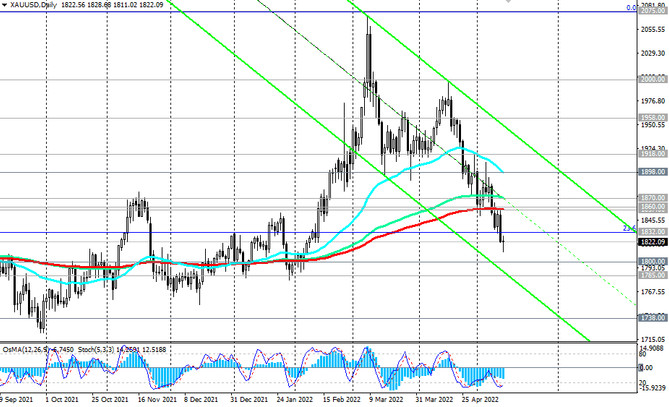At the end of the trading week, some market participants probably decided to take profits in long dollar positions. In addition, they also drew attention to macro statistics from the US, which came this week, according to which inflation growth in the country has slowed down.
Thus, the consumer price index (CPI) in April rose by +0.3% (+8.3% in annual terms), exceeding the growth forecast by +0.2% and +8.1%, respectively. Although growth was better than expected, it still slowed down from +1.2% and +8.5%, respectively, in March.
This was reported by the US Bureau of Labor Statistics on Wednesday. And on Thursday, the Bureau of Labor Statistics released a report on US producer price indices. According to this report, the PPI fell from 11.5% to 11.0% in April (in annual terms). Core producer price index (Core PPI) fell from 9.6% to 8.8% in April (in annual terms). The data turned out to be worse than market expectations (10.7% and 8.9%, respectively), but still lower than the previous month values.
The data suggests that the Fed's more aggressive policy has been effective, so far.
Fed Chairman Jerome Powell on Thursday (on the radio program Marketplace) confirmed that the main task of the central bank is to regain control of inflation. He also said that if the economic performance is in line with expectations, he considers it appropriate to raise interest rates by 50 basis points at the next two meetings.
Judging by the fact that inflation still remains near 40-year highs, this makes one think that the Fed will continue to pursue a more aggressive policy.
By the way, yesterday the Senate approved Jerome Powell for a second term as head of the US Federal Reserve. It also confirms the view that the Fed's aggressive fight against rising inflation will continue, and while it remains at its highest levels over the past 40 years, further interest rate hikes should be expected.
This creates prerequisites for further strengthening of the dollar and the growth of its index. As of this writing, DXY dollar index futures are traded near 104.65, down from Thursday's new high since January 2003 at 104.95.
The divergence of the conditional curves of the monetary policies of the Fed and other major world central banks, apparently, will increase, which means that we should expect further strengthening of the dollar and, accordingly, the growth of the DXY dollar index. It is likely that the 105.00 level will be broken soon, and the DXY will head towards the 110.00 mark (at these levels, futures for the DXY dollar index were traded 20 years ago).
The strengthening of the dollar is also clearly visible in the XAU/USD pair, which is traded near 1821.00 at the time of publication of this article. The pair is actively declining after hitting a multi-year high of 2070.00 in March. If the downtrend continues, and everything goes exactly to this, then the levels 1800.00 and 1785.00 are likely to become the nearest downside targets for XAU/USD.






